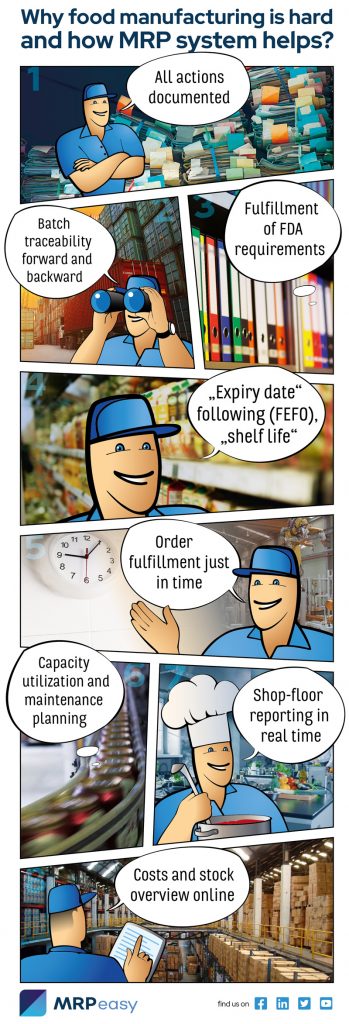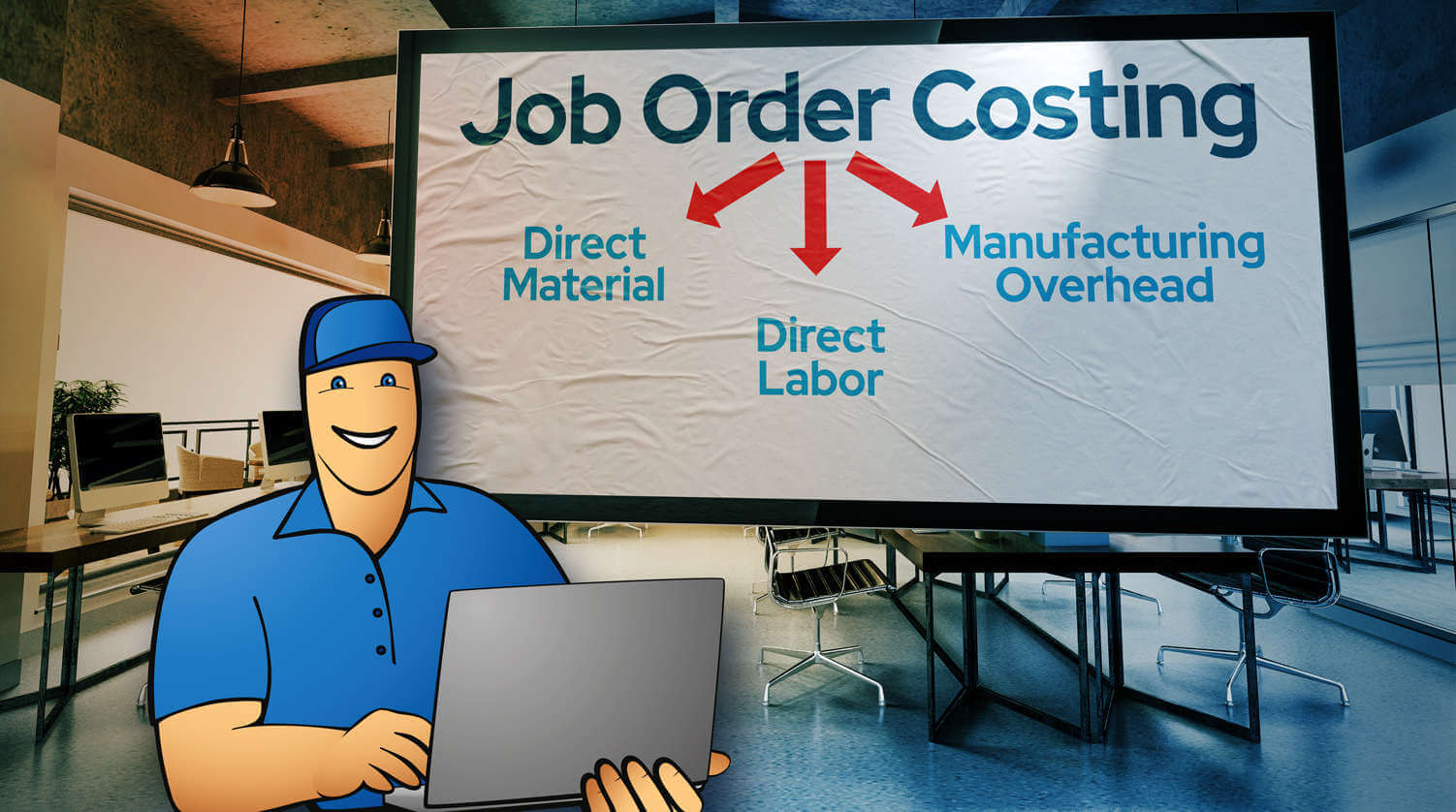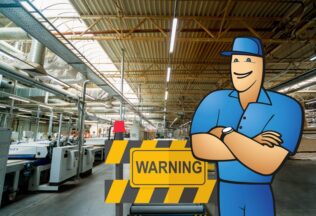Why Food Manufacturing is Hard and How MRP System Helps
For a food manufacturing business, many requirements must be met, which can vary depending on the type of food you make, the facilities that you use, and the market you operate in.
You can also listen to this article:
1. All actions documented
Whether you receive some materials with a Purchase Order, move them in stock, consume them in a production run, or ship some products to customers, all these actions get documented in an MRP/ERP system.
Additionally, important information like the vendor, person who handled the goods or performed an operation, the date, time, and quantity, even batch numbers and certificates can be recorded in a single system
2. Batch traceability forward and backward
Keeping track of each ingredient and component is a daily exercise in a food manufacturing business.
- For each ingredient, you need to know where and when did you receive it, what is its batch number, and other properties.
- You must document exactly which products, by their batch number, a specific batch of ingredients were used in.
- Plus, keep records from which batch a customer received the products from.
When there is an issue with a product, the MRP system easily lets you trace the problem backward from a specific customer complaint to a specific production run, and even specific ingredients.
When an issue is discovered with a component, in an MRP system, it is possible to easily trace it forward, which products are affected and which customers received them.
Doing the exercise manually, on paper slips and in spreadsheets, is a gruesome task. However, when using a specific system designed especially for it, this will quickly become a simple task performed second-nature.
Here is an article about How to Go From Excel to Manufacturing Software / MRP System.
3. Fulfillment of FDA requirements
For a food manufacturing business, many requirements must be met, which can vary depending on the type of food you make, the facilities that you use, and the market you operate in.
An MRP system can be a useful tool to help meet such requirements, especially when considering the previous two points, proper documentation of actions and batch traceability, which are important requirements to meet.
When an auditor walks in, it is great to just open the system and easily pull up the full chain of events that has happened to some specific product, where its ingredients were sourced from, and other important information.
This not only saves a lot of time and gives a great impression when compared to going through a paper- or spreadsheet-based system, but additionally, such MRP systems themselves are more fool-proof. It is more difficult, more unlikely, to lose or forget some important bit of information by mistake.
4. Expiry date following, FEFO, shelf life
Together with batch tracking, in food manufacturing, it is necessary to know when some items are due to expire.
An MRP system can automatically track the expiry dates. According to the First Expired, First Out (FEFO) principle, it can automatically recommend in which order specific ingredients and components should be used in food manufacturing. And in which order should products be shipped to customers.
For example, it can even tell the worker to pick some specific items from a specific batch at a specific inventory storage location, which is a great time-saver.
For products manufactured, such a system can automatically track and calculate the shelf life of a manufactured product, which is a simple task, but very mundane and repetitive, and a simple chore to automate.
5. Order fulfillment just in time
Many manufacturing companies strive to be as lean as possible. One component in lean methodology is just-in-time manufacturing, which means that every action is done as late as possible, so there would be minimal waiting time at any point during the whole production and delivery process.
This, on one hand, allows for minimizing inventory levels. On the other hand, a bonus that just-in-time delivery brings for food manufacturing is that shipped products have more shelf life remaining than if they were made to stock a long time before delivery.
Understandably, this is not realistic in every company, but when possible and implemented, it can be an important advantage in a competitive market.
6. Capacity utilization and maintenance planning
“MRP” in the “MRP system” stands for Manufacturing Resource Planning, a term which in short represents materials planning, capacity planning, and production operations scheduling functionality.
This is the heart of an MRP system. The system helps the planner to see workloads farther ahead and more effectively plan the production schedule for maximum efficiency.
Additionally, it is easier to prevent unexpected downtime by planning maintenances, which the production scheduling algorithm can automatically take into consideration, so they would not be forgotten, or – what is even more typical – postponed due to an unrealistic schedule.
7. Shop-floor reporting in real-time
When workers look up their tasks from a screen on the shop floor, get all their information from there, and report all their tasks, then there will probably be very little additional paperwork for managers or assistants to fill. It can be generated by the system.
This opportunity is a great and under-estimated time-saver, that saves time for every party – both the workers and the managers.
Even more, real-time overview of current progress allows to react much quicker, ship quicker, or even prevent undesirable situations from developing early on.
Manually gathering such data for analysis and improvement of business processes is arduous and extremely time-consuming. Having it automatically gathered during normal operations of the company, is an important foundation for continuous improvement.
8. Costs and stock overview online
Having a central system for your inventory management is great. Even better is having it online, which you can access from any device, and share with the whole company.
Wherever you are, whenever you need it, you can pull up current inventory information, check the costs of products, see the expected profit on a newly closed sale, and much more.
During a crisis, like the COVID-19 crisis, this is even more important, as now more often than ever, it is necessary to access data from anywhere, for example, your home. Of course, manufacturing workers cannot stay home, but many businesses choose to have office workers work from home, to mitigate risks.




